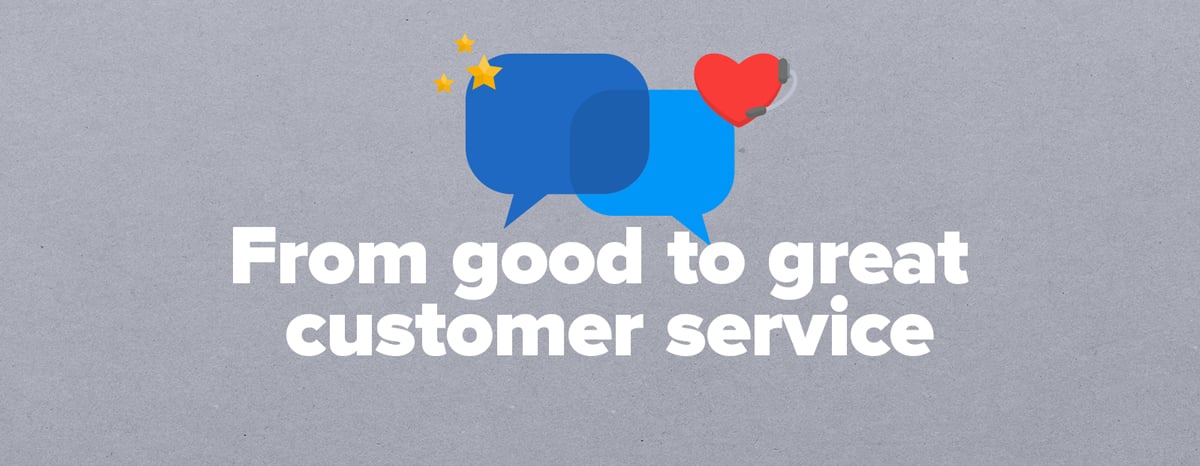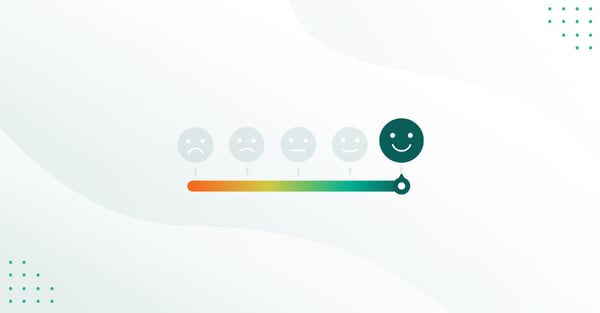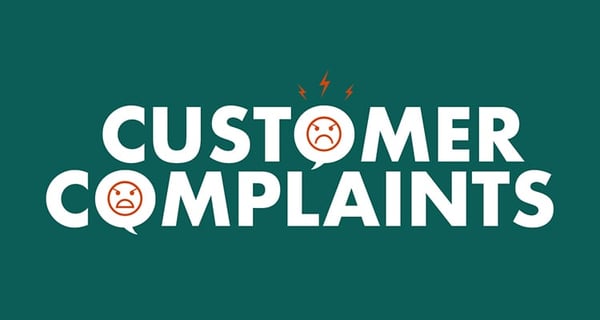Post summary:
- The power of social media
- The value of good customer service
- 4 ways to create a profitable customer service strategy
When customers have an amazing experience, they’ll share it.
And, if they have a bad customer experience, you can rest assured that they will definitely share it.
In fact, customers are more apt to sharing bad experiences than the good ones.
In an interview with 1,000 participants, American Express found that happy customers might tell 8 people while research suggests an unhappy customer might tell 21 people.
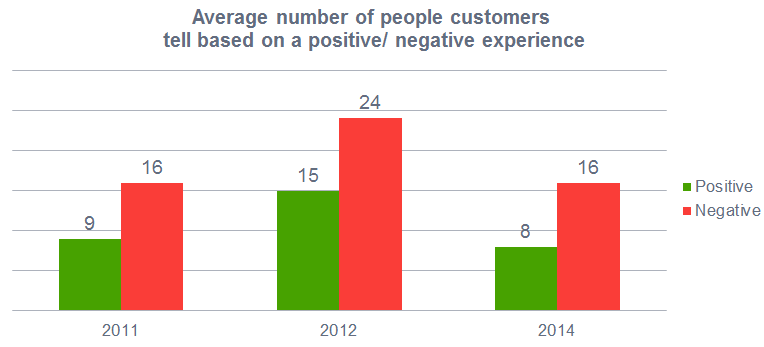
Now consider that your customers are connected to hundreds of their friends and colleagues via social media.
Statistics indicate that the average Facebook user has 155 friends and that the average Twitter user has 208 followers. The average number of LinkedIn connections is 930. If you add these together, one customer can reach 1,293 people from these three sites alone.
Take a moment and think about what one unhappy customer can do by broadcasting his complaint to all his direct connections. That one poorly handled customer service experience can then be shared and potentially reach an audience of millions!
The power of social media
In July 2014, Ryan Block, a tech journalist, tried to cancel his Comcast service over the phone.
In the 8 minute snippet that Block posted on SoundCloud, we hear that the “customer retention” specialist was more than persistent.
He was aggressive, inappropriate and rude (listen to the call below):
The rep bombarded Block with questions designed to retain him as a customer.
The whole experience was frustrating and maddening, but surprisingly, Block remained cool, calm and collected.
And then he posted his experience and the recording on social media.
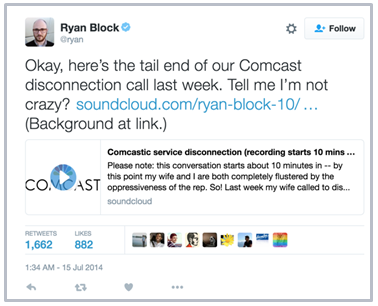
The recording went viral and has been heard by over 6.1 million people, gathered 2,098 comments and the case has become the poster child for really bad customer service.
Not the best case of PR, is it?
Now consider the story of United Airlines and how they broke singer/ songwriter David Carroll’s guitar.
Before leaving the plane, Carroll heard a passenger behind him shout, "My god they're throwing guitars out there." He and his band, Sons of Maxwell, looked out in time to see their guitars being tossed by baggage handlers. And not in a gentle way.
Baggage handlers broke his $3,500 guitar.
To have the guitar fixed, Carroll was quoted with a price of $1,200. Not exactly cheap.
Through nine months of emails and phone calls, Carroll tried to get compensation for the $1200 of damage to his guitar. When he didn’t get an answer to his calls and emails, he took matters into his own hands and wrote a song "United Breaks Guitars."
Carroll posted the music video on YouTube, where, yes, you guessed it - it went viral.
To date, the video has received 15 million views.
According to the Times of London, "...within four days of the song going online, the bad PR caused United Airlines' stock price to suffer a mid-flight stall, and it plunged by 10%, costing shareholders $180 million.”
That’s right. The cost of bad service to United Airlines is worth approx. $180 million.
I’m no finance expert, but wouldn't it have been better to simply pay the $1200 in damages?
The value of good customer service
How can companies like Comcast and United Airlines act the way they do when good customer service plays such an important role in a company’s business health these days?
They do it because they can. And they do it because there’s a lack of true competition.
But, keep in mind that these companies are the exception, not the rule.
They’re big corporations or monopolies.
The rest of us are just regular, hard-working businesses who recognize that customer service is the new marketing.
Consider these facts:
- 86% of consumers quit doing business with a company because of a bad customer experience
- 40% of customers say improved interaction with service employees is their key driver to spending more with the company
- 78% of online customers recommend a brand to friends and other contacts after a great customer experience
- 73% of customers cited rude and incompetent staff as the primary reason why they give up on a brand
While this research certainly makes a case for investing in customer service, what is the value of good customer service to your business?
Interestingly enough, Peter Kriss, a senior research scientist at Medallia set out answer that question.
Kriss gained access to experience and revenue data from two global businesses. One of these was a transaction-based business; the other, a relationship-based subscription business.
When comparing the two, he noted that transactional businesses primarily care about how often customers return and how much they spend per visit, while subscription-oriented industries focus on retention, cross-sell, and upsell.
He analyzed the data and found that transactional type customers who had the best past experiences spend 140% more compared to those who had the poorest past experience.
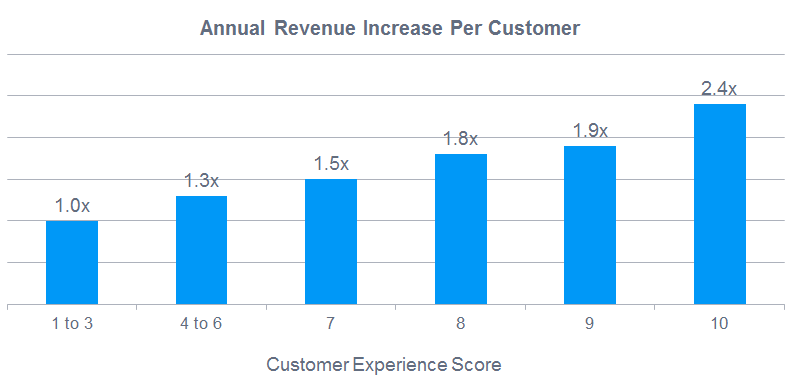
With regards to subscription-based businesses, the study also found that on average, a customer who says he’s had a bad experience will only remain a customer for a little over a year. On the other hand, if the customer has said that he’s had a great experience, he’s more likely to remain a customer for another six years!
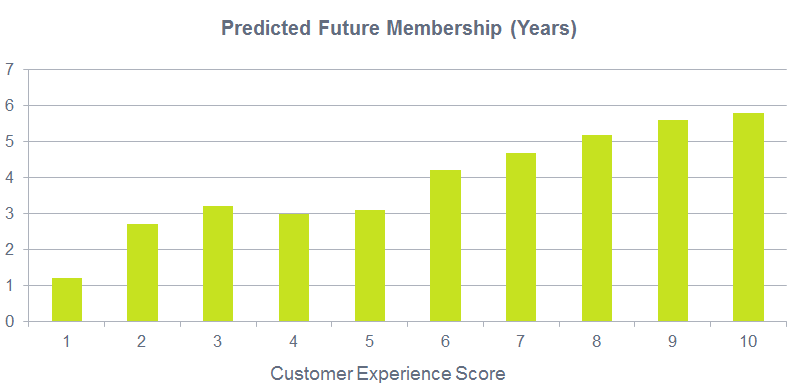
The key take away is this:
A good customer experience means customers spend 140% more and remain loyal for 6 years! (Tweet this!)
Now that's a customer service strategy worth investing in!
Four ways to create a profitable customer service strategy
Let’s take a few moments to see what key business lessons we can learn to make sure that we stay off the most hated list and how we can use these lessons to develop a profitable customer service strategy:
1. Putting the “customer first” has to be anchored from the top
Comcast employees have reported that the company puts too much emphasis on trying to upsell customers on more expensive service bundles at all costs rather than addressing customer needs and concerns.
When employees are incentivized and trained to retain the customer at all costs, then it’s a clear sign that it’s the needs of the company that comes first and not the customer.
In order for a “customer first” culture to work, it’s management who must buy into the vision and anchor it in the organization.
This means developing a clear customer service strategy and vision, as well as creating guidelines that set the standards, holding people accountable for their behavior.
2. Reward people for the right behavior
You’ve got to have a reward system that supports what your company stands for.
Comcast rewarded customer service reps for selling and not for making the customer happy.
Lauren Bruce, a former Comcast customer account representative says, ““Unless a customer was moving, we were encouraged to use retention techniques. If someone is saying, ‘screw my service, I hate you,’ you would say, ‘Hey, do you want phone too?’”
If you want to reinforce good customer service behavior, then compensate employees for that.
This doesn’t have to be a money reward. You can also reward through informal recognition programs, which are a good, cost-effective way of reinforcing the behavior you want and raising morale at the same time.
Here are a few examples:
- Publicly recognize an employee who has been favorably named in a customer feedback survey.
- Send out a monthly "Great Customer Service Achievement E-mail Award" to the entire company acknowledging one outstanding employee.
- Create a "Hall of Fame" in the lobby. Put up a picture of each employee of the month, and engrave their name on a master plaque with words of recognition.
- Create an internal award for customer satisfaction and encourage employees to nominate their peers whose work exemplifies a focus on customers.
3. Hire and train the right people
We’re all a product of our environment.
Let’s take Zappos as an example. Zappos’ brand is about providing the very best customer service and the best customer experience. And they believe that customer service shouldn’t be just one department it should be the entire company.
So when they hire, Zappos wants their recruits to “fit in socially, intellectually, and emotionally," write Michael J. Silverstein, Dylan Bolden, Rune Jacobsen, and Rohan Sajdeh in "Rocket: Eight Lessons to Secure Infinite Growth."
There are two different sets of interviews in Zappos.
The hiring manager and his/her team will do the standard set of interviews looking for relevant experience, technical ability, fit within the team, etc. But then the HR department does a separate set of interviews, looking purely for culture fit. Candidates have to pass both sets of interviews in order to be hired.
Zappos doesn’t compromise on the culture fit and have been known to turn down very good candidates to protect their culture.
The next step after hiring is training.
Everyone that is hired into their headquarters goes through the same 4-week training program that the Customer Loyalty Team (call center) reps go through, regardless of department or title.
They go over company history, the importance of customer service, the long term vision of the company, their philosophy about company culture — and then each new recruit is actually on the phone for 2 weeks, taking calls from customers. This goes back to the belief that customer service shouldn’t just be a department; it should be the entire company.
4. Follow through on your promises
Customers don’t want to hear “I’m sorry” a countless number of times.
What they want is for their problem to be fixed.
After Ryan Block shared his recording on social media, Comcast senior vice president, Tom Karinshak, released the following statement:
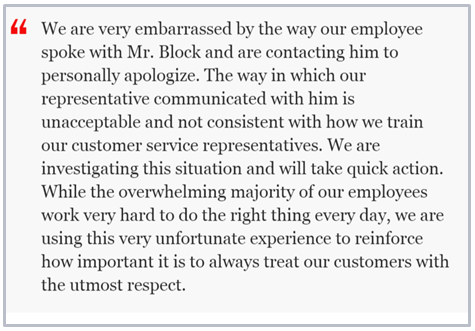
Comcast has said that they will devote more money and resources to fix these customer service issues. Yet, the complaints keep pouring in and they remain at the top as one of the worst customer service companies ever.
Don’t fall into the same trap.
Apologies don’t mean anything. It’s the action that counts.
Conclusion
Social media has made the customer more powerful than ever.
All it takes is just one wronged and angry customer to create a lot of unwanted repercussions for your business – the kind that can seriously damage the reputation of your business.
Good customer service is good business - both for you and for the customer.
Think about it: Happy customers buy 140% more and they stay with you for at least 6 years.
And if you’re one of those who think you can’t provide good customer service because it costs too much. Think again.
Providing a bad customer experience could be even more costly in terms of returned products and customer dissatisfaction. Sprint found that by improving the customer experience they were able to reduce costs by 33%.
There really is no reason to treat customers poorly.
If you really care about good customer service, set the vision, set the goals, create a plan for action, communicate it to the organization, execute it and religiously follow up on the plan.
It’s all about deciding what is important to your business. Once you do that and steer relentlessly in that direction, the rest will fall into place.
What's your take on creating a profitable customer service strategy?
